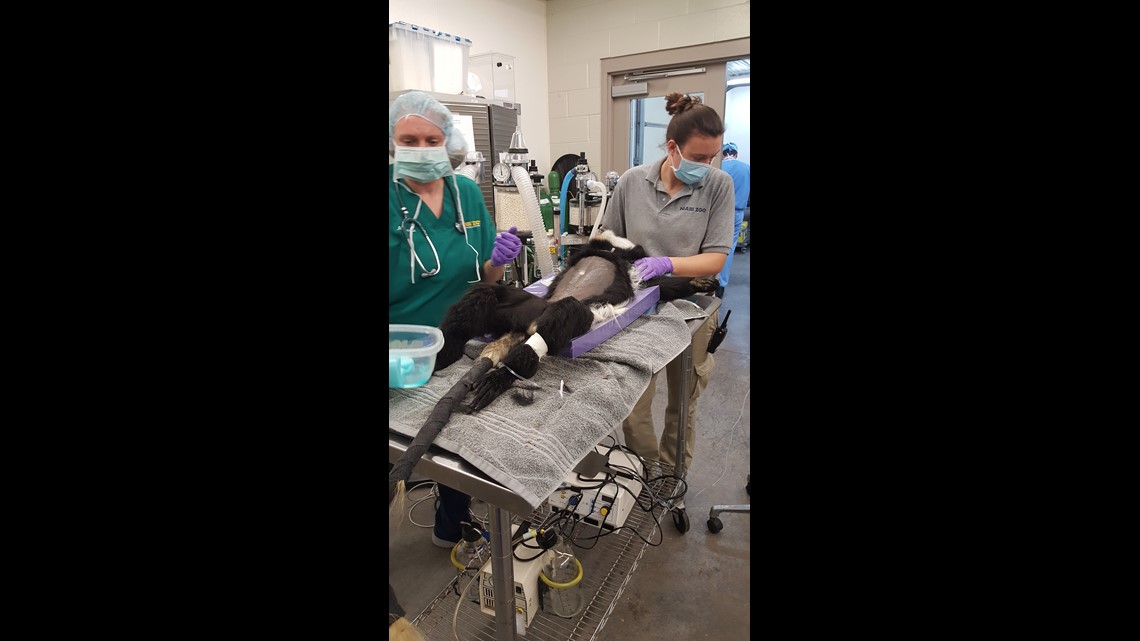COAL VALLEY, Ill. — You could study the Colubus monkeys at the Niabi Zoo for hours, but you’d still have a hard time picking out which one of those active creatures had major surgery in the last six months.
Keeya, the aunt of the zoo's troop, is a fascinating story of primate medicine meeting human medicine. One that will be studied for years to come.
“She was a perfect patient,” said Dr. Lauren Hughes, staff veterinarian.
Keeya’s keeper noticed something was wrong back in February. It was a tumorous mass protruding from the monkey’s vaginal wall. Tests came back right away – it was cancer. Just like a human cancer patient, Keeya needed more diagnostic imaging. It could all be done not too far away at Brookfield Zoo outside Chicago.
“The type of cancer that she had, there’s not a lot of documented cases of that in non-human primates, but specifically in Colobus monkeys,” said Dr. Hughes. “I couldn’t find any data.”
The Colobus anatomy would also be challenging for Dr. Hughes because it more closely resembles a human reproductive system. That gave her the idea to reach out to a human doctor – OBGYN, Dr. Justin Hinzman.
“I actually thought someone was playing a trick on me,” Dr. Hinzman recalled about getting that phone call. Still, Dr. Hinzman agreed to take the case. They teamed up for the surgery in March, a full hysterectomy for Keeya.
“We had a lot of the same instruments, just on a smaller scale,” he said. The experience was a lot different than working on a full-grown adult, human patient. This patient was only 30 pounds, about the size of a two to three year old human.
“This patient I didn’t meet before the procedure. Dr. Hughes did all the preoperative consultation for me so that was nice,” joked Dr. Hinzman.
“A human doctor was definitely needed,” said Dr. Hughes. “It’s funny to talk about it that way, because we all work together. It’s just funny to me.”
The surgery was successful. It took about three hours in the Niabi Zoo Animal Hospital. The next challenge was Keeya’s recovery. It’s not as if they could keep her on bedrest to heal. Instead, her keepers had to put her in a smaller enclosure while keeping her close to her troop for her mental well-being. It took about 10 weeks to slowly integrate her back into the exhibit.
The doctors, human and animal, had a common goal. They wanted the best possible outcome for Keeya. Six months later, they feel confident that’s exactly what happened.
“It was a rare opportunity I’m extremely proud to be a part of,” said Dr. Hinzman. His 4-year-old daughter Nona is also very impressed.



